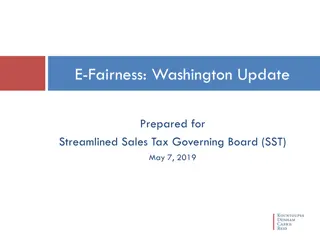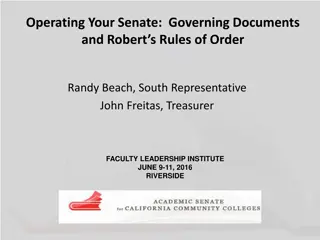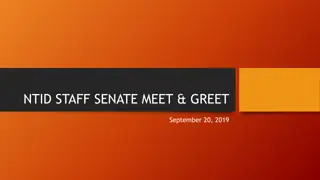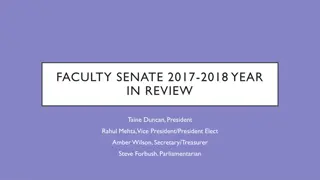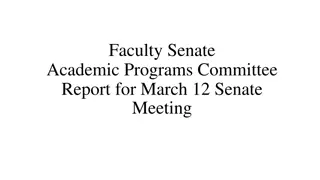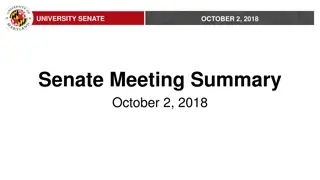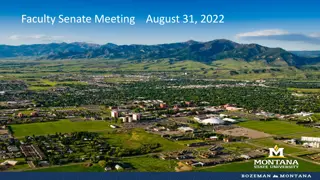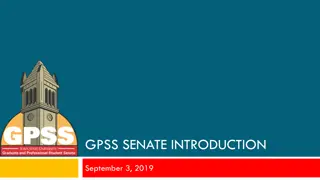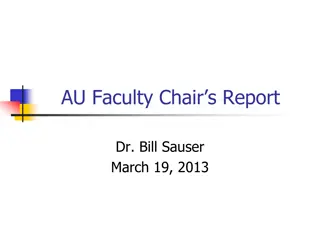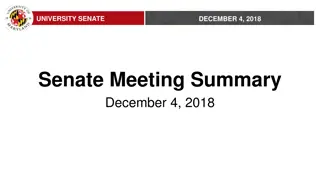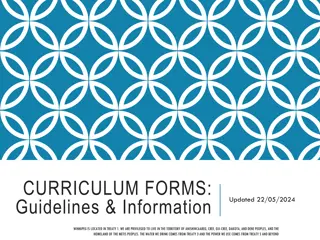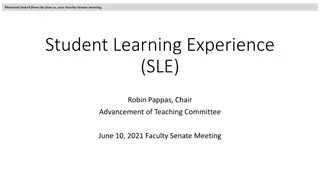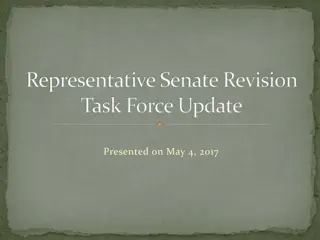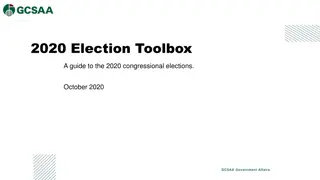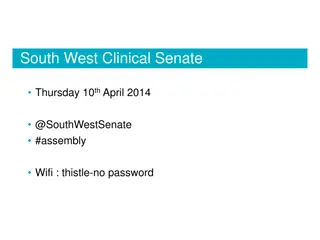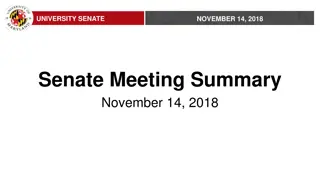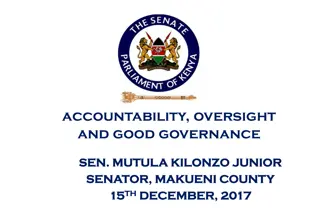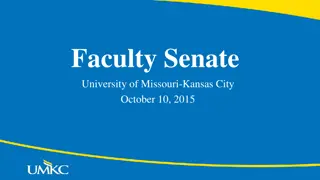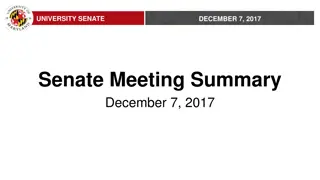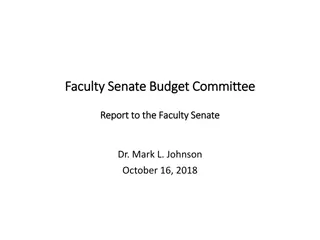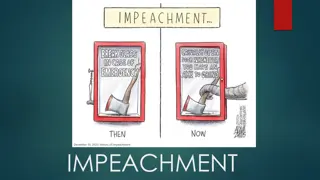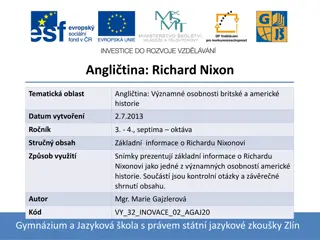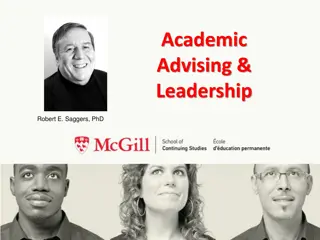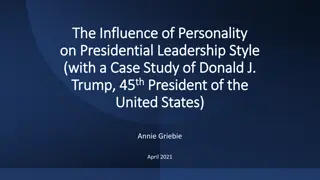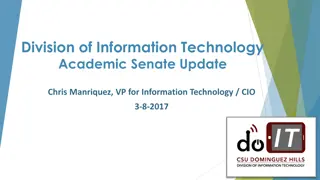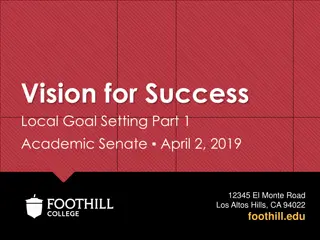Understanding Leadership as an IDEAA Academic Senate President
Explore the role of an Inclusion, Diversity, Equity, Anti-Racism, and Accessibility (IDEAA) Academic Senate President, emphasizing support for faculty engagement in IDEAA work. Learn to leverage leadership opportunities, Senate tools, and resources effectively. Gain insight into becoming a successful Senate President with a focus on IDEAA principles and responsibilities.
Uploaded on Oct 09, 2024 | 0 Views
Download Presentation

Please find below an Image/Link to download the presentation.
The content on the website is provided AS IS for your information and personal use only. It may not be sold, licensed, or shared on other websites without obtaining consent from the author. Download presentation by click this link. If you encounter any issues during the download, it is possible that the publisher has removed the file from their server.
E N D
Presentation Transcript
Leadership: Being an IDEAA Academic Senate President
Presenters Stephanie Curry, ASCCC Area A Representative Robert L. Stewart Jr. ASCCC South Representative 2
General Session Description Leadership: Being an IDEAA Academic Senate President What does it mean to be a Inclusion, Diversity, Equity, Anti-Racism and Accessibility (IDEAA) Academic Senate President? How can you use your leadership opportunity to support and engage faculty in IDEAA work around the 10+1? Come to this session to learn the nuts and bolts around senate leadership and ASCCC tools and resources that can help you be an IDEAA leader.
IDEAA Inclusion Diversity Equity Anti-Racism Accessibility
Becoming a Local Academic Senate President 1) You are never going to be fully ready to become a Senate President. You just have to jump in. 2) You can put your own stamp on your presidency. You don't have to do things the same way as your predecessors 3) Bring your own skills and experience to the position. They elected you, be you. 4) Learn which hills you are willing to die on
Where do you start? Taking on Leadership Role Understanding the 10+1 and Authority of Academic Senates Learning about the Academic Senate for California Community Colleges and its resources Papers Resolutions Local Senate Visits Info Questions (info@asccc.org) Learn about IDEAA Equity-Driven Systems: Student Equity and Achievement in the California Community Colleges (2019)
Understanding the Basics BEING FAMILIAR WITH THE STATUTORY AND REGULATORY CONTEXT IN WHICH THE SENATE OPERATES Protect and honor the participation of faculty in institutional decision making regarding academic and professional matters as defined by Title 5 Definitions
Title 5 53200 - Definitions (b) Academic Senate means an organization whose primary function is to make recommendations with respect to academic and professional matters. (c) Academic and Professional matters means the following policy development and implementation matters:
The 10 + 1 Title 5 53200 (c) College governance structures, as related to faculty roles Curriculum, including establishing prerequisites Faculty roles and involvement in accreditation process Degree & Certificate Requirements Grading Policies Policies for faculty professional development activities Educational Program Development Processes for program review Standards & Policies regarding Student Preparation and Success Processes for institutional planning and budget development
And dont forget + 1 11. Other academic and professional matters as mutually agreed upon
Choosing your battles If IDEAA matters to you than prioritize those areas If everything is a 10+1 matter does it dilute the senate authority on areas where it really matters Be willing to fight on issues that really matter even knowing you might fail in the short term, there is always a long term battle. Gather your supporters. Work with other groups, Admin, Classified, Students to move forward your IDEAA work.
Setting the Tone as IDEAA Senate President The senate president can set the Tone by: Creating a vision & strategy Recognizing leadership styles and how to use them Being proactive Setting direction Raising expectations Asking lots of questions Having allies
Setting the Agenda Setting an individual meeting agenda and yearly/semester tasks/goals Look at deadlines and timelines for required documents Plan ahead on items needing debate Align agenda with local goals and mission of the college Work with other groups for alignment in collegewide discussions Work with your local executive committee members to build agendas Work to get presenters/experts to attend to answer questions of senators Bring in IDEAA topics and experts to share with your senate to continue or move the conversation along and take action 14
Who do you work with Students Classified Senates Administrators Faculty Unions Infinity Groups
Title 5 51023.7 Students. 9+1 Grading policies Codes of student conduct Academic disciplinary policies Curriculum development Course/program initiation or elimination Processes for institutional planning and budget development Standards and policies regarding student preparation and success Student services planning and development Student fees + 1. Any other district or college policy that will have a significant effect on students
SSCCC Anti-Racism Plan The Student Senate Called for Changes in Cultural Awareness and Respect Equity Training Curriculum Changes Peer Mentors and Alliances Classroom Experience
Working with the Administration and the Board Facilitate Conversations with the Administration Look for commonalities (e.g. serving students) Communicate frequently and establish relationships before there is a pressing issue to resolve Share the good work of faculty with the board at every opportunity Maintain effective relationships with other governance groups
Timelines & Working with other Groups Time Management Work backwards from the deadline to make sure senate has enough time to review and debate issue Be proactive and make sure admin know deadlines for when items need to be to senate for full review If possible add in an extra meeting for review in cases where there might be significant debate. Working with other groups Work with other groups for alignment in collegewide discussions (classified professionals, students, administration) Work with other local senate leaders if you agree, joint resolutions or recommendations are powerful in districts Work with local unions to identify areas of shared purview 19
How can you make a difference (IDEAA) Representation Disaggregation Address Power dynamics and/or authority implications Agendizing Outreach Appointments
The Power of Appointments As required by Title 5 Powers, after consultation with the chief executive officer or designee, appoint faculty representatives to college and district- wide committees
Representation Matters On Senate and Campus Committees Examine campus and senate committee membership to ascertain gaps in representation Assure that all faculty appointments to campus governance committees are made by the academic senate (by the president or whatever structure the senate uses) Reach out to groups of faculty that are typically not well represented on committees to make appointments that are more inclusive
Representation MattersOn Hiring Committees Ensure that a diverse group of faculty sit on hiring committees Work with human resources to assure that faculty are adequately trained on effective practices to obtain a diverse pool of potential new hires Maximize the faculty representation on hiring committees for academic administrators, especially VPs, presidents, and chancellors as permitted in board policies and administrative procedures
Where to get support and resources 1) ASCCC website and info@asccc.org 2) Read your local Administrative Regulations and Board Policies 3) Title 5 and Ed Code (you don't have to memorize it just know where to find it) 4) Local Senates Handbook a) History of the ASCCC b) Roles and Responsibilities of a Senate President c) Duties as a local Senate President d) Ensuring Effectiveness of the Local Academic Senate e) Linking the Local Academic Senate with the ASCCC


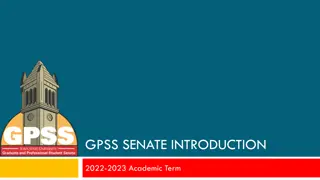
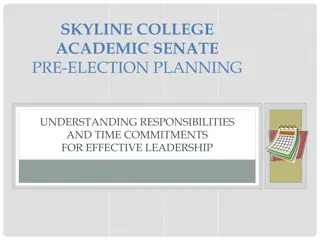
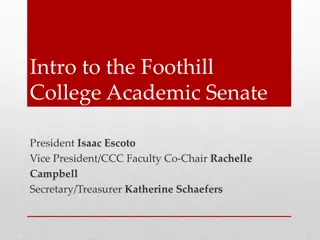
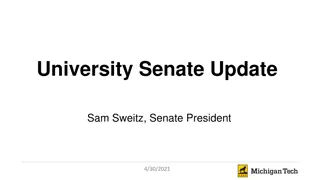
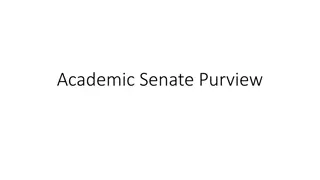
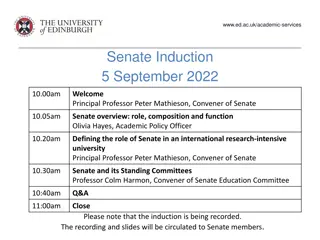
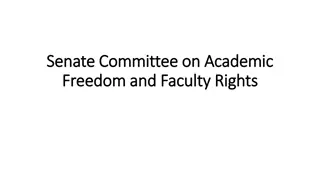
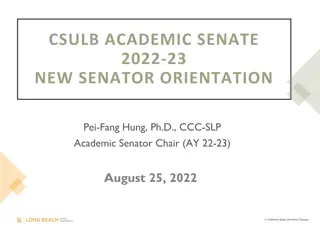
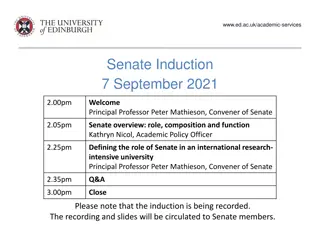
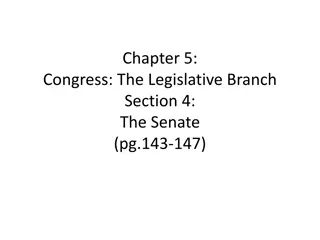
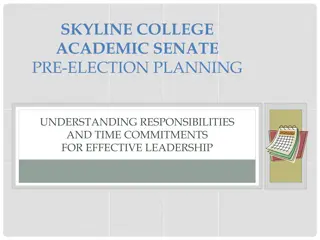
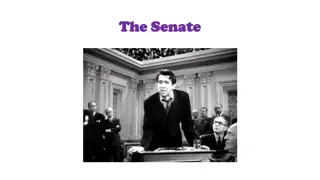
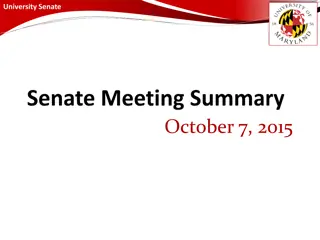
![Overview of the Faculty Senate at [Institution Name]](/thumb/233771/overview-of-the-faculty-senate-at-institution-name.jpg)
